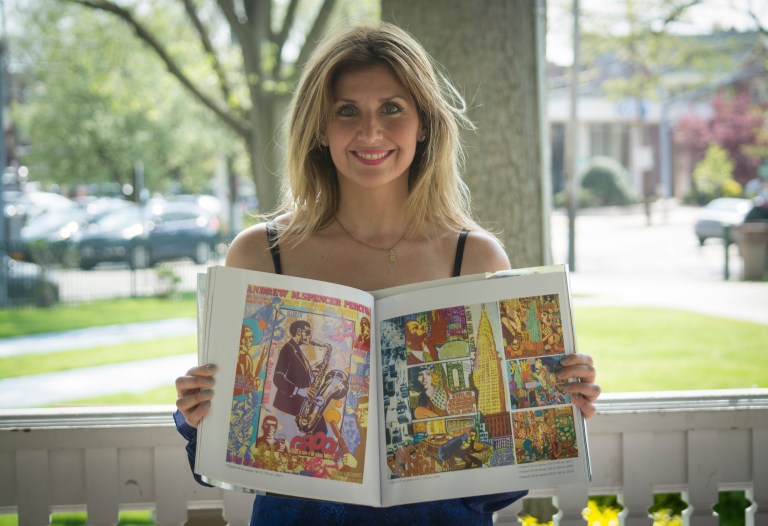
Lise Amsellem, a real estate salesperson with Edna Mashaal Realty in Great Neck, and famous French contemporary artist Marc Ferrero have discussed his works in Europe and what’s new in the world of art for about a decade.
Now Amsellem aims to help grow his presence in the United States, speaking with art gallery representatives in New York City while arranging an exhibition event in a “private waterfront home” in Great Neck to take place sometime in June.
While Ferrero’s “storytelling art” is well established in Europe and – by his own estimates – there are more than 4,000 of his paintings in private collections in the United States, both see room for growth in the U.S. through real estate.
“I have a passion for real estate and art and I figured there’s a real fusion between the two of them, not only because it’s an investment when people are famous and everything, but also because it makes sense,” Amsellem said. “When people buy beautiful homes or apartments, they want to have beautiful paintings on the wall.”
“To live with people who take you on an adventure is really interesting,” Ferrero, 54 and working as a professional artists for more than two decades, said in a separate interview.
Ferrero, a founder of the “storytelling art” movement, said his paintings blend the styles of artistic movements like impressionism, surrealism, expressionism, pop art and cubism to help them stand out. They also showcase movement and movie-style framing, he said, in order to create a fictional story and its characters.
“Now, if you tell stories, you can use all these movements and find a balance on the paintings,” Ferrero said. “And that’s why there’s a revolution with collectors in Europe: because I think I’m the first one to do that.”
But while Ferrero’s stories are fiction, he noted that they draw from real life. One of the dominant themes is a clash between humanity and technology, he said, both in general and in creating art.
“Being an artist when you see all the new technologies and artificial intelligence, modernity is very interesting,” Ferrero said, “but you have to preserve the human parts.”
Ferrero retracted his artistic roots to when he was five or six years old. He grew up frequently drawing, reading comic books and watching black and white TV series in the 1960s. At the time he didn’t have an appreciation for Pablo Piccasso and “other great artists,” he said, but he did know one thing.
“I wanted to create characters and start stories,” Ferrero said.
Ferrero said he began to truly pursue art around 16 or 17, taking on projects like creating short comics from video clips of a movie about Mozart, as well as music artist Prince. He also traveled through places like his native France, Morocco, Spain, and Istanbul.
“I didn’t go to school,” Ferrero said. “I always said to the young people if you want to learn drawing and the rules of drawing, you have to work in the comic field.”
Ultimately, Amsellem said his work ended up being revolutionary in the art world.
“It’s a real innovation. It was never seen before I believe that’s why he became famous so quickly,” Amsellem said. “The fact that he’s entering European museums by the end of the year really means something and that’s also the reason I’m trying to get him into American museums.”






